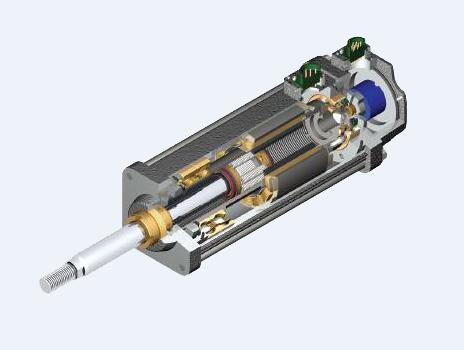The structure of the electric cylinder consists of: Lead screw + cylinder + motor + Composed of power tubes, this structure looks very simple, but it has a lot of knowledge. Moreover, all electric cylinders in the world currently have the same structure. Below we will analyze and compare domestic and foreign electric cylinders through the cross-sectional view of the electric cylinder. Through this comparative analysis, we will have a deeper understandingInternal structure of electric cylinder.

Domestic electric cylinder internal structure diagram

Internal structure of heavy-duty electric cylinder

Planetary roller screw integrated servo electric cylinder structure diagram

High performance servo electric cylinder structure diagram
Through the decomposition of the above high-definition structural diagrams of domestic, foreign, integrated electric cylinders, and folding electric cylinders, we have a deeper understanding of the structure of the electric cylinder. The principle of the electric cylinder is also explained very clearly in Baidu Encyclopedia, but it is more intuitive through pictures.
The working principle of the electric cylinder: Yes Electricity is used as the direct power source, and various types of motors (such as AC servo motors, stepper servo motors, DC servo motors) are used to drive different forms of screws (or nuts) to rotate, and are converted into nuts through the spiral motion between components. (or screw) linear motion, and then the nut (or screw) drives the cylinder or load to perform reciprocating linear motion. TraditionalElectric cylinderGenerally, an electric motor is used to drive the screw to rotate, and the spiral motion between the components is converted into linear motion of the nut. The "nut reversal type" electric cylinders that have emerged in recent years (such as integral planetary roller screw electric cylinders) use the opposite driving method, that is, the driving nut rotates and is converted into linear motion of the screw through the spiral motion between the components. .






 WhatsApp: +8615857777578
WhatsApp: +8615857777578